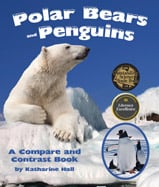Alignment to Standards for UT

| Grade | Number | Standard |
|---|---|---|
| 2 | CC-2.III.1 | Investigate relationships between plants and animals and how living things change during their lives. |
| 2 | CC-2.III.1a. | Observe and describe relationships between plants and animals. |
| 3 | SC-3.II | organisms depend on living and nonliving things within their environment. |
| 3 | SS-3.I.2a. | the major world ecosystems: desert, plain, tropic, tundra, grassland, mountain, forest, wetland |
| 4 | SC-4.V.2 | Describe the common plants and animals found in Utah environments and how these organisms have adapted to the environment in which they live. |
| 4 | SC-4.V.2b. | Cite examples of physical features that allow particular plants and animals to live in specific environments (e.g., duck has webbed feet, cactus has waxy coating). |
| 4 | SC-4.V.2c. | Describe some of the interactions between animals and plants of a given environment (e.g., woodpecker eats insects that live on trees of a forest, brine shrimp of the Great Salt Lake eat algae and birds feed on brine shrimp). |
| 4 | SC-4.V.4b. | Describe how the behavior and adaptations of Utah mammals help them survive winter (e.g., obtaining food, building homes, hibernation, migration). |
| 5 | SC-5.V.2 | Describe how some characteristics could give a species a survival advantage in a particular environment. |
| 5 | SC-5.V.2b. | some environments give one species a survival advantage over another (e.g., warm water favors fish such as carp, cold water favors fish such as trout, environments that burn regularly favor grasses, environments that do not often burn favor |
| 5 | SC-5.V.2c. | a particular physical attribute may provide an advantage for survival in one environment but not in another (e.g., heavy fur in arctic climates keep animals warm whereas in hot desert climates it would cause overheating; flippers on such anim |